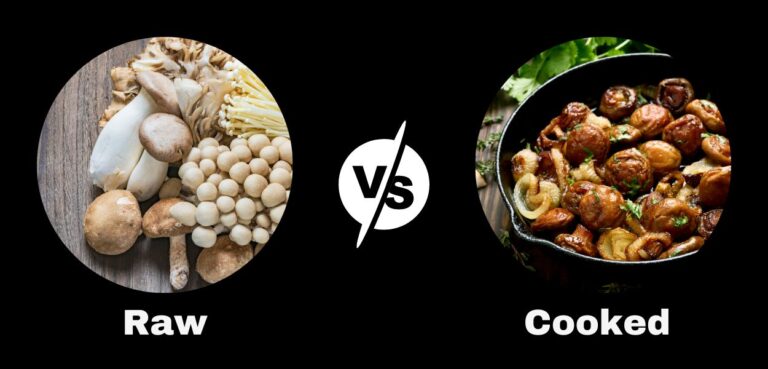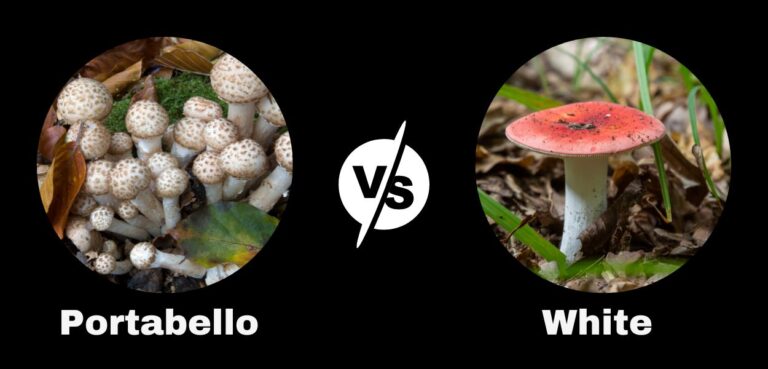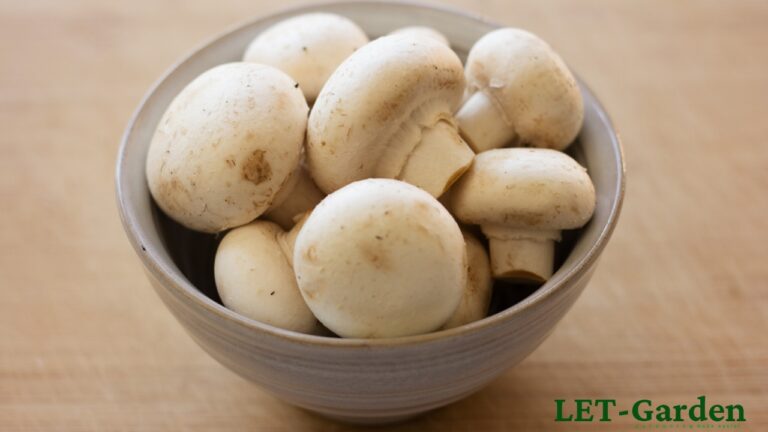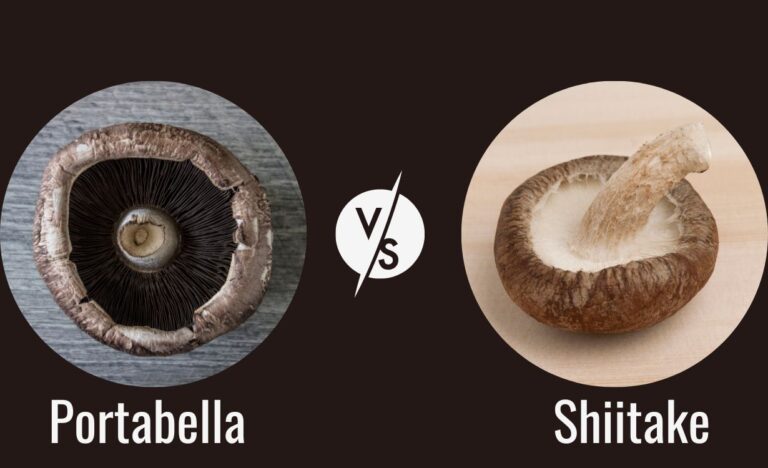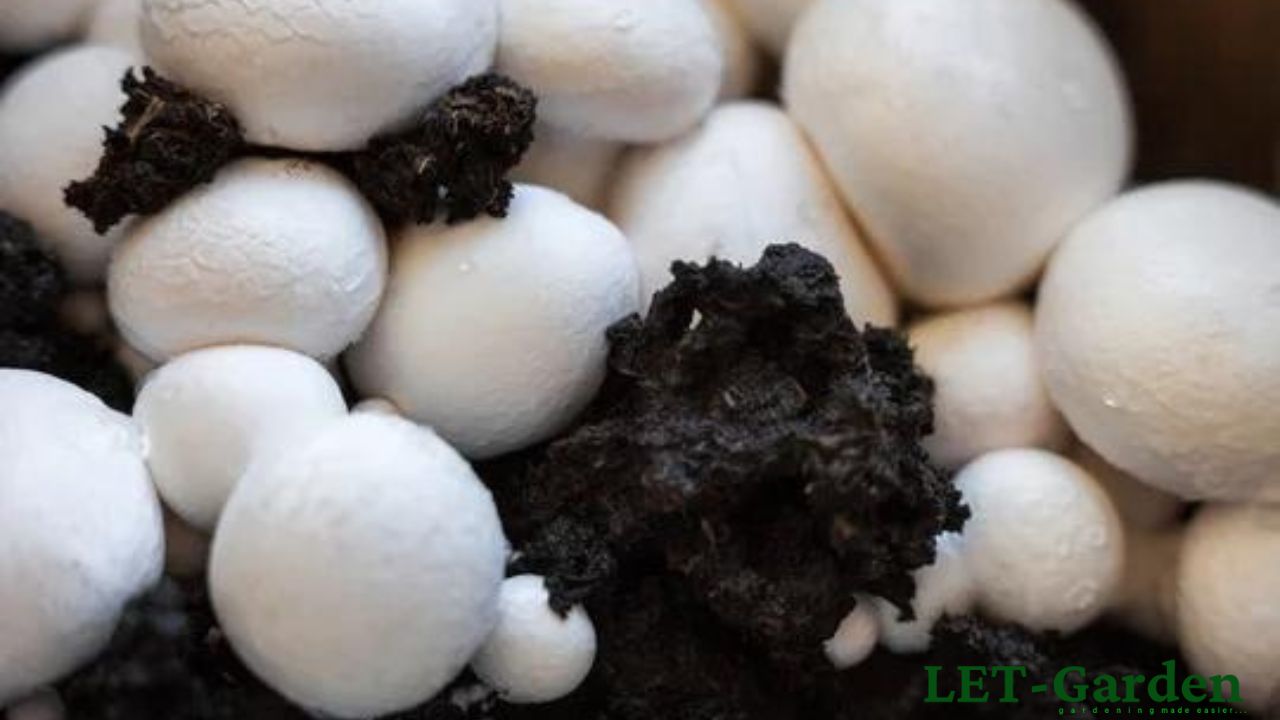
White button mushrooms and coffee grounds – can they be a match made in heaven? Will White Button Mushrooms Grow in Coffee Grounds? Explore the science behind growing mushrooms in coffee waste and get started on your own cultivation journey.
Mushroom cultivation is an interesting and rewarding hobby, but it can be a challenge to find the right growing medium for your mushrooms. Over the years, coffee grounds have become a popular growing medium for a variety of mushroom species, including white button mushrooms. This may come as a surprise to some, but the use of coffee grounds as a mushroom-growing medium has been around for decades.
In this blog post, we will explore the possibility of growing white button mushrooms on coffee grounds. We will delve into the nutrient requirements of white button mushrooms and how coffee grounds can provide those nutrients. We will also discuss the benefits of using coffee grounds as a mushroom-growing medium and provide a step-by-step guide on how to grow white button mushrooms in coffee grounds.
So, whether you are a seasoned mushroom cultivator or just starting out, read on to discover how coffee grounds can be used to grow delicious and nutritious white button mushrooms.
Will White Button Mushrooms Grow in Coffee Grounds?
White button mushrooms, also known as Agaricus bisporus, are one of the most commonly cultivated mushroom species in the world. They are highly prized for their mild, nutty flavor and firm texture, and are used in a variety of dishes, from soups and stews to salads and pizzas.
In order to grow successfully, white button mushrooms require a specific set of nutrients, including nitrogen, phosphorus, potassium, calcium, and magnesium, among others. These nutrients can be found in a variety of natural substrates, including compost, straw, and sawdust.
Coffee grounds are also a rich source of nutrients and have become increasingly popular as a mushroom-growing medium. On average, coffee grounds contain 2% nitrogen, 0.3% phosphorus, and 0.6% potassium, making them suitable substrates for white button mushrooms.
Several scientific studies have been conducted to investigate the feasibility of using coffee grounds as a substrate for white button mushrooms. One study found that coffee grounds produced mushrooms with a similar yield and quality to those grown in traditional substrates such as wheat straw and sawdust. Another study found that coffee grounds could support the growth of white button mushrooms for up to four cycles, indicating that they are a sustainable and viable alternative to traditional substrates.
However, the answer is yes – white button mushrooms can grow in coffee grounds. Coffee grounds provide the necessary nutrients to support the growth of white button mushrooms and have been shown to be a viable and sustainable substrate for mushroom cultivation. In the next section, we will provide a step-by-step guide on how to grow white button mushrooms on coffee grounds.
How to Grow White Button Mushrooms in Coffee Grounds

Growing White Button Mushrooms in coffee grounds is a simple and fun process. In this section, we will guide you through the necessary materials, step-by-step procedures, tips for success, and common mistakes to avoid.
Materials Needed:
- Fresh White Button Mushroom Spawns (available online or at garden centers)
- Used Coffee Grounds (enough to fill a growing container)
- A Growing Container (it could be a bucket or a large plastic bag)
- A Spray Bottle (to mist the mushrooms)
Step-by-Step Procedure:
Step 1: Collect Fresh Coffee Grounds
Fresh coffee grounds are the best choice for mushroom cultivation. Collect them within 24 hours of brewing, and make sure to break up any compacted pucks before using them. If you live in a city, coffee shops and cafes are great sources for collecting used coffee grounds.
Step 2: Mix With Mushroom Spawn and Substrate
Mix the coffee grounds with mushroom spawn at a ratio of 10% spawn to coffee grounds by weight. Add a substrate, such as sterilized straw or sawdust, in a 20% ratio to the weight of the coffee grounds. The substrate will help improve air circulation and prevent compaction of the coffee grounds. Once the ingredients are mixed, place them in growing bags, ensuring that the bags are well-mixed.
Step 3: Incubation
Store the growing bags in a warm, dark place for two to three weeks, and check regularly for the appearance of white mycelium. Mycelium is a network of roots and is the main organism from which mushrooms grow. After two to three weeks, the bags should be full of bright white mycelium.
Step 4: Fruiting
Once the mycelium has developed, cut a small hole in the growing bag and place it in a location with indirect sunlight. Spray the bag with water daily to maintain moisture. Mushrooms will begin to grow within five to ten days, and they should double in size each day. Continue to spray the bag with water twice a day for the next five to seven days.
Step 5: Harvest
Harvest your mushrooms when the caps start to flatten out. Cut them with a knife or twist the cluster gently to remove them. After harvesting, submerge the growing bag in water overnight to rehydrate the medium and encourage a second crop to grow by spraying the bag daily.
Tips for Successful Growing:
- Keep the coffee grounds moist by misting them with water regularly.
- Ensure that the container is well-ventilated to prevent the buildup of carbon dioxide, which could be harmful to the mushrooms.
- Avoid exposing the growing container to direct sunlight or high temperatures, which could cause the mushrooms to dry out.
- Use fresh coffee grounds as old grounds might have lost their nutritional value.
Common Mistakes to Avoid:
- Overwatering: Too much water can cause the mushrooms to rot, leading to a failed harvest.
- Using unsterilized coffee grounds: Bacteria present in unsterilized coffee grounds can interfere with the growth of your mushrooms.
- Not misting the mushrooms: Mushrooms need a humid environment to grow. Failure to mist them could cause them to dry out.
With these simple steps and tips, you can successfully grow white button mushrooms in coffee grounds at home. The process is not only easy, but it is also environmentally friendly, economical, and healthy.
Benefits of Using Coffee Grounds as a Mushroom Growing Medium
Aside from the fact that growing mushrooms in coffee grounds is a fun and rewarding hobby, there are also several benefits to using coffee grounds as a mushroom-growing medium. Here are three key benefits:
Environmental Benefits
Using coffee grounds as a growing medium for mushrooms is a great way to recycle waste and reduce the amount of organic material that ends up in landfills. In the US alone, over 250,000 tonnes of coffee grounds are generated annually, and most of these end up in landfills where they release methane, a potent greenhouse gas. By diverting these coffee grounds to mushroom cultivation, we can reduce the amount of organic waste that ends up in landfills and also reduce the emission of methane gas, which has been shown to have 25 times the global warming potential of carbon dioxide.
Economic Benefits
Coffee grounds are a readily available and low-cost substrate that can be used for mushroom cultivation. Unlike other growing mediums such as straw or sawdust, which can be expensive and difficult to source, coffee grounds are often available for free from local coffee shops or restaurants. By using coffee grounds as a substrate, mushroom growers can reduce their production costs, which can lead to increased profitability.
Health Benefits
In addition to the environmental and economic benefits, growing mushrooms in coffee grounds can also have health benefits. For example, mushrooms are a good source of protein, vitamins, and minerals, and are known to have immune-boosting properties. They are also low in calories and fat, making them a healthy addition to any diet. Furthermore, coffee grounds contain antioxidants that are thought to have anti-inflammatory and anti-cancer properties. By growing mushrooms in coffee grounds, we can create a healthy and nutritious food source that is also environmentally friendly and economically sustainable.
Easy to work with
Coffee grounds are easy to work with and require minimal equipment. Unlike other substrates that require pasteurization or sterilization, coffee grounds are ready to use right out of the bag. This means that even beginners can start growing mushrooms with minimal investment in equipment or expertise. All you need is a supply of coffee grounds, some mushroom spawn, and a few simple tools to get started.
However, using coffee grounds as a mushroom-growing medium has numerous benefits, including environmental, economic, and health benefits. Whether you are an experienced mushroom grower or just starting out, using coffee grounds as a substrate is a great way to reduce waste, save money, and create a healthy and sustainable food source.
Expanding Your Coffee Ground Mushroom Growing Repertoire
While white button and oyster mushrooms are the easiest and most popular mushrooms to grow in coffee grounds, there are other varieties worth trying:
Shiitake Mushrooms
- Although not as easy to grow as oyster mushrooms, shiitake mushrooms are a popular variety known for their meaty texture and smoky flavor.
- Use a mix of coffee grounds and sawdust, sterilize the mixture, and inoculate with shiitake spawn.
Lion’s Mane Mushrooms
- Lion’s Mane mushrooms have a unique, “furry” appearance and a mild, slightly sweet flavor.
- Use a mix of coffee grounds and hardwood sawdust, sterilize the mixture, and inoculate with Lion’s Mane spawn.
Portobello Mushrooms
- Portobello mushrooms are a larger, mature version of the white button mushroom and have a meaty flavor and texture.
- Mix coffee grounds with straw, sterilize the mixture and inoculate with portobello spawn.
Remember to research each variety carefully before attempting to grow it, as they all have different growing requirements and considerations.
No matter which type of mushroom you choose to grow in your coffee grounds, remember that mushroom cultivation can be a fun and rewarding hobby, with the added benefit of being a sustainable way to repurpose waste.
FAQs
How much coffee grounds are wasted each year?
Every year, approximately 9 million tonnes of ground coffee are brewed around the world, resulting in an estimated 18 million tonnes of wet, waste coffee grounds.
How do you use coffee grounds for mushroom substrate?
To use coffee grounds as mushroom substrate, mix the mycelium and freshly brewed coffee grounds in a jar, cover them, and store them in a dark place. Keep the temperature at 20-25°C for 2-3 days, until the grounds are completely covered with white mycelium. Then add 1-2 cm of freshly brewed coffee grounds and wait for the mycelium to cover it up once again.
How does caffeine affect mushroom growth?
The presence of caffeine can inhibit mycelial growth on agar and in liquid culture in the laboratory. Increased levels of spent coffee grounds (SCG) in an SCG/sawdust substrate can delay mycelial growth and prevent fruiting during commercial cultivation.
Which mushrooms grow on coffee grounds?
Oyster mushrooms and shiitake mushrooms are the varieties that grow well on coffee grounds, and they are the easiest to grow, even for beginners. It’s important to take care of hygiene before opening and closing the cellophane layer, and if you notice mold on your coffee grounds, spray less water.
Can you use coffee grounds as a substrate for mushrooms?
Yes, mushrooms can be grown on coffee grounds, which can serve as a substrate for mushroom cultivation. The optimal substrate can be achieved by combining used coffee grounds with straw or sawdust. Harvestable mushrooms should start to appear within two weeks of creating your mushroom bed.
Final Thoughts on White Button Mushrooms Grow in Coffee Grounds
Growing mushrooms on coffee grounds is a sustainable and accessible way to produce edible mushrooms at home. This process not only diverts coffee grounds from going to waste but also reduces the demand for virgin materials for a substrate. It is a perfect opportunity to get creative and start experimenting with growing your own mushrooms. With some basic knowledge and a bit of patience, you can cultivate your own healthy and delicious mushrooms, and contribute to a more sustainable planet.
References:
- Chang, S. T., & Miles, P. G. (2004). Mushroom cultivation and marketing. International Journal of Medicinal Mushrooms.
- Gaitán-Hernández, R., Esqueda, M., & Mata, G. (2002). Use of coffee pulp and maize for the production of Pleurotus ostreatus in a two-stage fermentation system. Applied Microbiology and Biotechnology.
- Royse, D. J. (2014). Specialty mushrooms and their cultivation. Boca Raton, FL: CRC Press.

Hi, I’m Miles, the lead team member behind Gardeem.com. Besides being a passionate grower and writer, I’m a husband, father and grandfather to three! I started Gardeem in 2017 to provide simple and reliable gardening advice to everyone, regardless of their ability levels.


